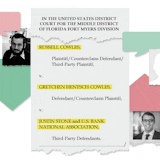Ezekiel Allen's weary voice and his long list of medical challenges — schizophrenia, a back injury, bipolar condition, high blood pressure, brain polyps, dental troubles, migraine headaches — make him sound far older than his 45 years.
Homeless for a number of years, Allen didn't see a doctor regularly for far too long. When the pain of his conditions became overwhelming, the Minneapolis man would get medical care from one of the costliest venues — an emergency room.
But now that he's enrolled in Hennepin Health — a pioneering new Hennepin County and state Department of Human Services demonstration project — Allen relies on less-expensive clinic settings for his care. His conditions are also under better control, he said, because medical staff helped him organize his many medications into separate bubble packs so that he knows what and how many pills to take every day.
"That made it easier for me. I keep up with my meds now,'' said Allen, who also has reading difficulties.
For all of the talk wrought by the federal health reform debate about wringing efficiencies out of the health care system, the hard and unglamorous work of doing this in the real world is just getting underway. But thanks to Hennepin Health — a program whose first-year success helping people like Allen is now garnering national recognition — and other pilot programs, Minnesota is ahead of the curve nationally in figuring out how to deliver better but less costly care for medical assistance patients.
The work here could well become a new blueprint nationally for spending taxpayers' medical assistance dollars more effectively — a critical step forward when federal Medicaid spending stands around $400 billion a year and eligibility for the jointly run federal-state health program for the needy is expanding under the 2010 Affordable Care Act.
Credit is due not just to the Hennepin County officials and the program's hardworking staff, but also state Department of Human Services officials. Under DHS Commissioner Lucinda Jesson, this state agency has shown admirable willingness to experiment with new ways to deliver care for medical assistance patients.
Many other states are simply cutting medical assistance funds or moving patients into private managed-care health plans in hopes of saving money. But Minnesota is exploring new options like Hennepin Health in which the state contracts directly with county or medical providers who have banded together to provide care for a certain number of patients — giving them greater control of medical assistance dollars and, in turn, more freedom to innovate and focus on preventive care.



